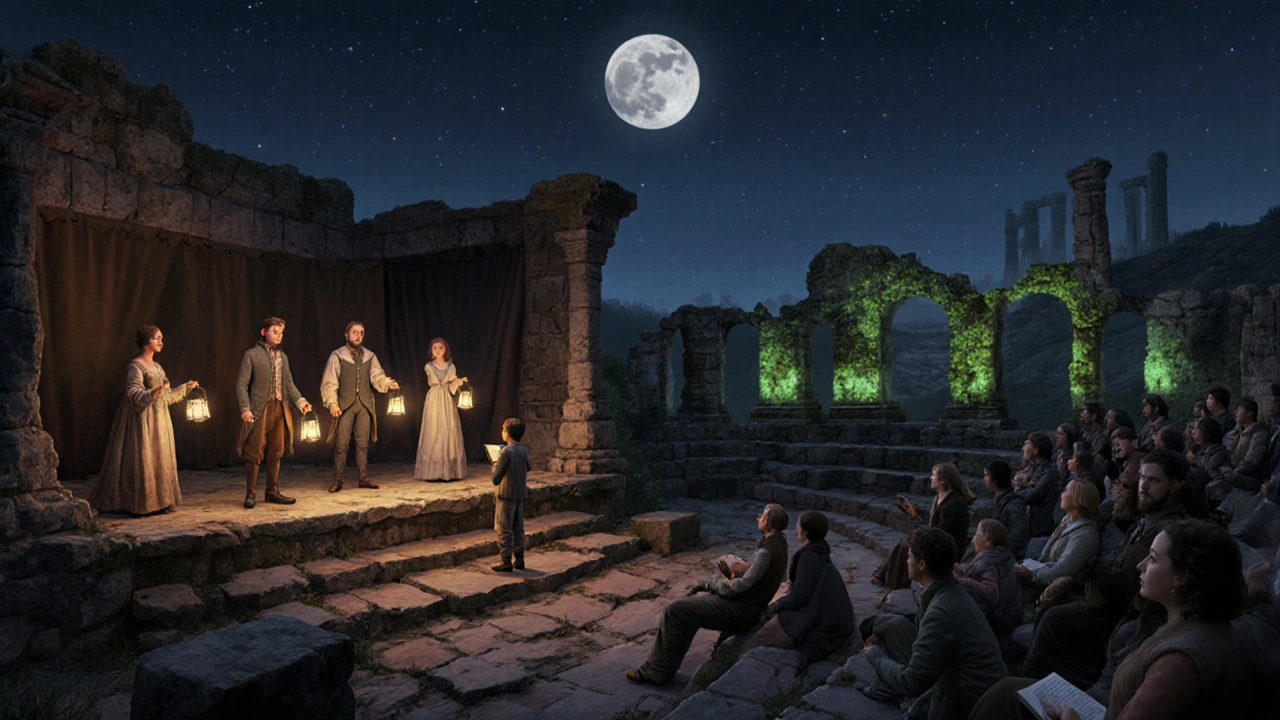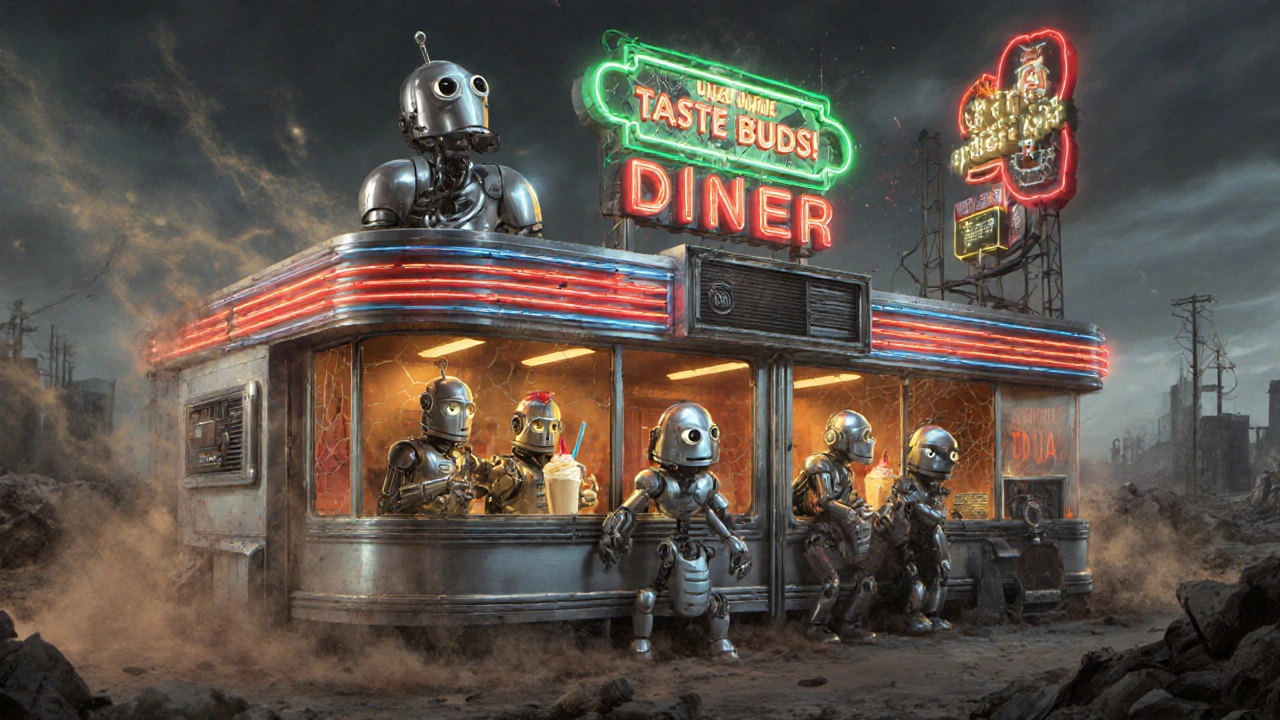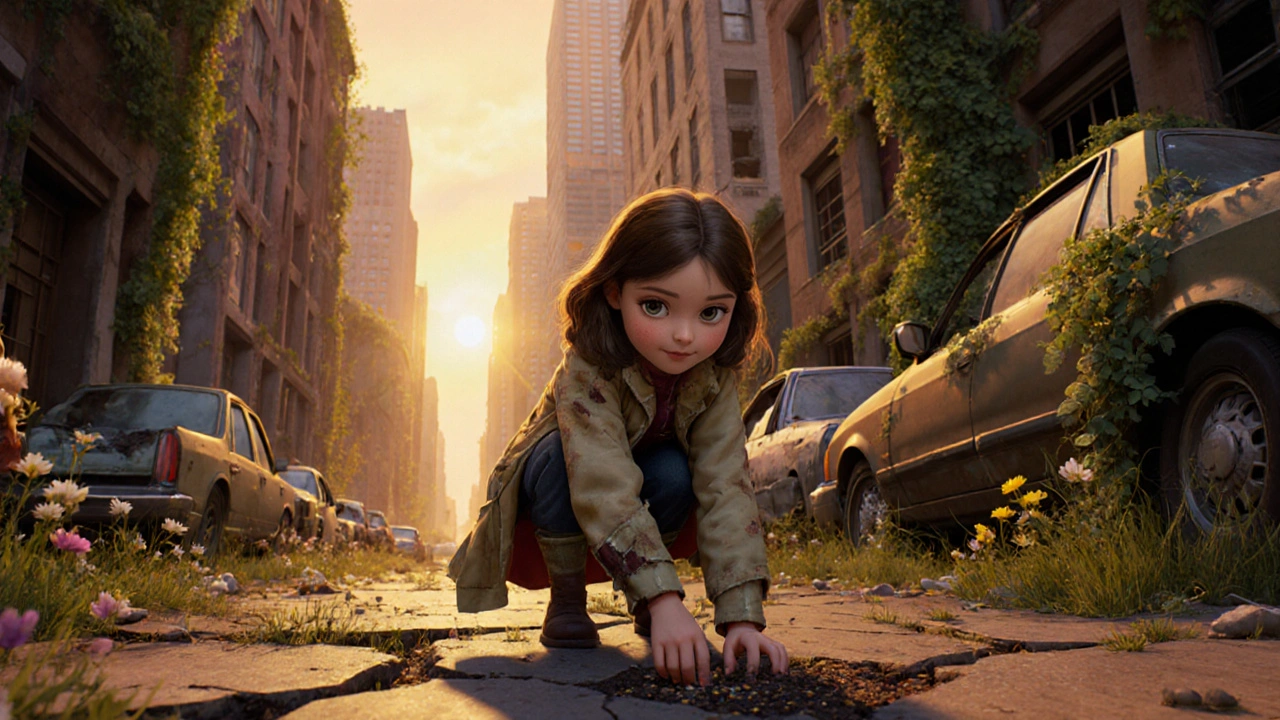Why We Can’t Look Away from the End of the World
There’s something about the collapse of everything that pulls us in. Not because we want to see chaos - but because we want to see what happens after. When the power goes out, the cities turn to dust, and the rules vanish, who do we become? That’s the question driving every post-apocalyptic story on screen, from gritty road movies to streaming hits with million-dollar budgets. It’s not just about zombies or nuclear fallout. It’s about survival, connection, and whether humanity can rebuild - or if it’s already too late.
The Rules of the Ruins: How Apocalypses Are Made
Not all endings are the same. The apocalypse on screen doesn’t come in one flavor. It’s broken into clear types, each shaping the story differently. Nuclear war? That’s the classic - think Mad Max or Threads. Pandemics? The Last of Us turned a fungal infection into a haunting emotional journey. Climate collapse? The Rain made rain itself the killer. And then there’s the zombie apocalypse - the most popular by far, making up 38% of all post-apocalyptic content, according to Wikipedia’s 2024 analysis.
Each trigger changes the world’s tone. A nuclear blast leaves barren wastelands and mutated creatures. A pandemic leaves silent towns and desperate survivors. A climate disaster? You get flooded cities and scarce resources. The best shows don’t just show the destruction - they make you feel its weight. Station Eleven didn’t focus on the virus. It focused on a traveling Shakespeare troupe. That’s the difference between spectacle and soul.
The Big Players: What’s Dominating the Screen Right Now
Right now, three shows define the genre: The Walking Dead, The Last of Us, and Fallout. Each represents a different era of the genre.
The Walking Dead (2010-2022) was the giant. With 177 episodes over 11 seasons, it turned zombie survival into a cultural event. But it also showed the danger of stretching a story too thin. Fans loved the first four seasons - raw, emotional, character-driven. After that? Many felt it became repetitive. Reddit’s top comment from March 2024 says it best: "Seasons 1-4 felt human. Seasons 5-11 felt like they were just killing time."
The Last of Us (2023) changed everything. HBO’s adaptation of the video game didn’t just get the visuals right - it got the heart right. With a 96% Rotten Tomatoes score and a 9.3/10 IMDb rating from over 850,000 viewers, it proved audiences crave depth over dread. The apocalypse here isn’t the monster. The monster is what people become when they’re left alone. And the LGBTQ+ storyline? It wasn’t added for diversity - it was essential to the story. That’s why it resonated so hard.
Then came Fallout in April 2024. Amazon’s $180 million series blended dark satire with retro-futurism. Think 1950s commercials advertising nuclear bombs and robots serving whiskey. It drew 65 million viewers in 11 days. But not everyone loved it. Critics and fans split: some called it brilliant, others said the tone felt jumbled. Was it a comedy? A tragedy? A video game adaptation? That confusion is part of its identity - and its risk.

Behind the Scenes: How These Worlds Are Built
Creating a broken world isn’t just about CGI. It’s about texture, sound, and practical effects. Mad Max: Fury Road spent $150 million and used over 1,500 visual effects shots - but 80% of the vehicles were real, modified, and driven by stunt teams. That’s why the chaos feels real. The Last of Us used 98 practical effects and only 317 CGI elements. The fungus on the walls? Real mold. The blood? Real syrup. The silence in the abandoned malls? That was just a quiet set with no music. It’s the absence of noise that makes you feel the loss.
Streaming platforms demand more than ever. Netflix requires 4K HDR with 10-bit color. HBO Max needs Dolby Atmos audio. That’s why Fallout cost $22.5 million per episode - more than most films. The budget isn’t just for actors. It’s for rebuilding entire cities in Canada, designing 1950s-style robots, and creating a world where radio static is the only music left.
Who’s Watching, and Why?
Age matters. Viewers under 25 love fast, brutal stories like Black Summer - 72% of its audience is in that group. People over 35? They’re drawn to slower, quieter shows like Station Eleven. That’s not a coincidence. Younger audiences want adrenaline. Older viewers want meaning.
And gender? Black Summer had an 82% approval rating from female viewers, thanks to its focus on a mother searching for her daughter. Compare that to The Walking Dead, which only scored 63%. The difference? Agency. When the main character isn’t just surviving - she’s fighting to protect someone she loves - it changes everything.
International audiences respond differently too. The Rain was a hit in Scandinavia (78% satisfaction) but flopped in North America (49%). Why? Because Nordic audiences connect more with environmental dread. American viewers want immediate threats - zombies, bombs, mutants.
The Future: From Destruction to Rebuilding
The genre is changing. The old formula - "world ends, people fight, someone dies" - is wearing thin. A 2024 survey of 47 studios found that 63% of upcoming projects focus on rebuilding, not just surviving. That’s a huge shift.
Upcoming shows are asking: What happens when the dust settles? Can communities form? Can art return? The Last of Us Season 3, set to begin filming in August 2024, will likely explore this. So will the The Last of Us Part II game adaptation - rumored to have a $200 million budget and even deeper LGBTQ+ storytelling.
Even the biggest franchises are feeling the pressure. The Walking Dead spawned six spin-offs, but viewership dropped. The audience isn’t tired of the apocalypse. They’re tired of the same story. The next big hit won’t be about another zombie horde. It’ll be about a group of kids learning to grow food in a dead city. Or a librarian preserving books in a ruined library. Or a radio station broadcasting music to no one - but still playing on.

What to Watch Next (And What to Skip)
If you want emotional depth: Watch The Last of Us. It’s the gold standard.
If you want action and style: Watch Mad Max: Fury Road. It’s a masterpiece of practical filmmaking.
If you want something different: Watch Station Eleven. It’s poetic, quiet, and unforgettable.
If you want satire and weirdness: Watch Fallout. It’s not for everyone, but it’s unlike anything else.
Avoid the noise. 2012 (2009) had a $79 million opening weekend but a 49% critic score. Roger Ebert called it "emotionally hollow." It’s spectacle without substance. Same with Z Nation - fun at first, but it ran out of ideas fast.
Where to Watch Right Now
Netflix has the biggest library: 14 post-apocalyptic series, but you need the Premium plan ($15.49/month) to stream them in HD. The Walking Dead is there. So is Black Summer and Snowpiercer.
HBO Max has The Last of Us and Station Eleven. But to watch them in 4K HDR, you need the $19.99 Ultimate tier.
Prime Video has Fallout - and it’s exclusive. No subscription elsewhere gives you this.
Accessibility matters too. Station Eleven has full ASL interpretation in every episode. Black Summer didn’t have captions in Season 1 - and got hundreds of complaints. Check before you watch.
Final Thought: It’s Not About the End. It’s About What Comes Next.
The post-apocalyptic genre isn’t about predicting the future. It’s about testing the present. When everything is stripped away - money, phones, laws - what do you hold onto? Love? Memory? Art? Hope?
The best shows don’t give you monsters. They give you mirrors. And that’s why we keep watching. Not because we fear the end. But because we need to believe that even after it, we still matter.
What makes a good post-apocalyptic story?
A good post-apocalyptic story doesn’t focus on the disaster - it focuses on the people left behind. The best ones explore how humans adapt, what they value when society collapses, and whether they can rebuild something meaningful. Shows like The Last of Us and Station Eleven succeed because they’re about connection, not carnage.
Is The Walking Dead still worth watching?
Only if you’re willing to accept that the best seasons are the first four. Seasons 1-4 are masterclasses in tension and character. After that, the pacing drags, the stakes feel fake, and the story repeats itself. Many fans say it lost its soul after Season 4. If you want to experience the genre’s peak, watch the first season - then decide if you want to keep going.
Why is The Last of Us so highly rated?
It’s the rare adaptation that improves on the source material. The show slowed down the story, gave characters room to breathe, and made the emotional core - the bond between Joel and Ellie - feel real. The acting, writing, and direction are all top-tier. It’s not just a zombie show. It’s a story about grief, love, and the cost of survival.
Are zombie shows over?
Not over - but tired. Zombie stories made up 38% of all post-apocalyptic content, but audiences are craving fresh threats. Pandemics, climate collapse, and AI uprisings are rising. The genre is evolving. The next big hit won’t be about another walker. It’ll be about something new - and more human.
Which post-apocalyptic show has the best visuals?
Mad Max: Fury Road still holds the crown for practical effects. Every vehicle, explosion, and dust cloud was real. For TV, Fallout wins with its retro-futuristic design - think 1950s tech in a ruined world. The Last of Us wins for atmosphere - the quiet, overgrown cities feel hauntingly real.
Can any of these apocalypses actually happen?
Some are more plausible than others. A fungal pandemic like in The Last of Us? The Cordyceps fungus does infect insects - but jumping to humans? That’s science fiction. Nuclear war? Very real. Climate collapse? Already happening. The shows aren’t predictions - they’re warnings dressed in fiction.
Why do these shows cost so much to make?
Building a broken world is expensive. You need to destroy sets, build new ones, create costumes, design props, and often film in remote locations. Fallout spent $22.5 million per episode because it recreated entire cities in Canada, designed hundreds of robots, and used real 1950s-era props. It’s not just acting - it’s world-building on a massive scale.
Is there a post-apocalyptic show with a happy ending?
Most don’t. But Station Eleven comes close. It doesn’t end with victory - it ends with hope. A theater troupe performs Shakespeare in a ruined world. Children learn to read. Music returns. It’s not about surviving. It’s about remembering what made life worth living. That’s the closest thing to a happy ending the genre offers.
What’s the most realistic apocalypse scenario shown on screen?
The pandemic in The Last of Us isn’t realistic - but the societal collapse that follows is. How hospitals fail. How people hoard supplies. How trust disappears. That part? It’s terrifyingly accurate. The same goes for Threads (1984) - a British TV movie about nuclear war. It’s grim, slow, and painfully believable. No explosions. Just silence. That’s the most realistic kind of end.
What’s next for the genre?
The future is rebuilding. Studios are shifting from "what if the world ends?" to "what if we try to fix it?" Expect more stories about community, education, art, and healing. The next big hit might be about a group of survivors teaching kids to grow food, or a radio station broadcasting poetry to empty cities. The apocalypse is behind us. Now, we’re learning how to live again.

